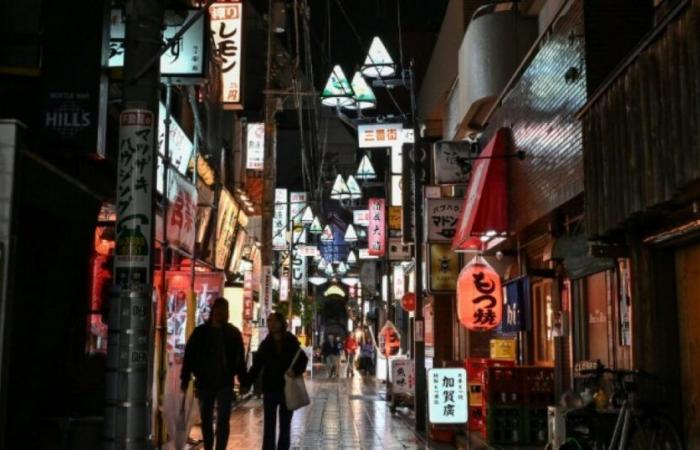The Japanese government approved on Friday a recovery plan equivalent to 136 billion euros to boost consumers' purchasing power in the face of inflation and stimulate sluggish growth, less than a month after a bitter electoral failure of the coalition in power.
This 21.9 trillion yen plan will still have to be approved in Parliament, where the government of Prime Minister Shigeru Ishiba no longer has a majority.
The program includes packages of around 30,000 yen (186 euros) for low-income households, subsidies for fuel and energy, tax adjustments, as well as assistance for small businesses, according to the government.
“The objective is to ensure that salary progression is regularly higher than inflation, and to ensure a transition towards an economy oriented towards growth, driven by salary increases and investment”, according to a press release.
The overall impact could reach 39 trillion yen if private sector loans and investments are added.
Everything will be financed with a lot of additional public spending – some 13.9 trillion yen according to the government -, which will require a revised budget to be passed by the end of December.
-Anger against inflation-
For Prime Minister Shigeru Ishiba, reviving consumption was a priority: after having promised in the wake of his appointment at the beginning of October to support low-income households and revitalize rural regions, he suffered a heavy failure in the early legislative elections at the end of October.
His formation, the conservative Liberal Democratic Party (PLD) and its small ally Komeito failed to retain the absolute majority in the lower house of Parliament.
Discontent with the rise in consumer prices, which has persisted in the archipelago for more than two years after decades of almost non-existent inflation, weighed heavily in the vote. Inflation, which is weighing down household spending, reached 2.3% again in October, with a historic surge of 59% in rice prices over one year.
And the growth of the gross domestic product (GDP) of the fourth largest economy in the world continues to run out of steam (only 0.2% year-on-year in the third quarter).
However, immediately, this recovery plan arouses mixed reactions in the streets of Tokyo.
“Today, not only low-income households but also middle-income families need more support measures,” regretted Hisaki Sato, a 46-year-old man, to AFP.
Katsuhiro Hirakawa, a 63-year-old Tokyo resident, said the government should “think carefully about why it needs more tax revenue, or how it can reduce unnecessary spending, before making decisions on the budget.”
-AI Support-
Needing the support of part of the opposition to adopt its recovery plan in Parliament, the Ishiba government included measures demanded by the People's Democratic Party (PDP, center) – notably an increase in the ceiling of taxable income.
According to the opposition party, this measure will encourage part-time employees, particularly young people and students, to work more to earn more, thereby limiting labor shortages and encouraging consumption.
But its detractors fear that this system will reduce tax revenues by several trillion yen, while Japan's debt ratio (more than 200% of GDP) is already one of the highest in the world, and that the aging of its population increases the pressure on public finances.
The Japanese central bank also began this year to raise its key rates, which had long remained almost zero: this will make the mountain of debt increasingly costly for the State, observes Yoshimasa Maruyama, economist at SMBC Nikko Securities.
Tax cuts “must be accompanied by a permanent source of revenue,” insists Mr. Maruyama.
Economists fear that pressure from opposition parties will force the minority government to grant generous aid to households and businesses without providing equivalent tax revenue… without tackling structural problems to make the country more competitive.
The government is also preparing a separate plan of 10,000 billion yen (61 billion euros) in public funds by 2030 to support the growth of artificial intelligence and the production of semiconductors in the archipelago.
According to media reports, the government plans to take a stake of 200 billion yen in the Japanese firm Rapidus, specializing in new generation chips.






